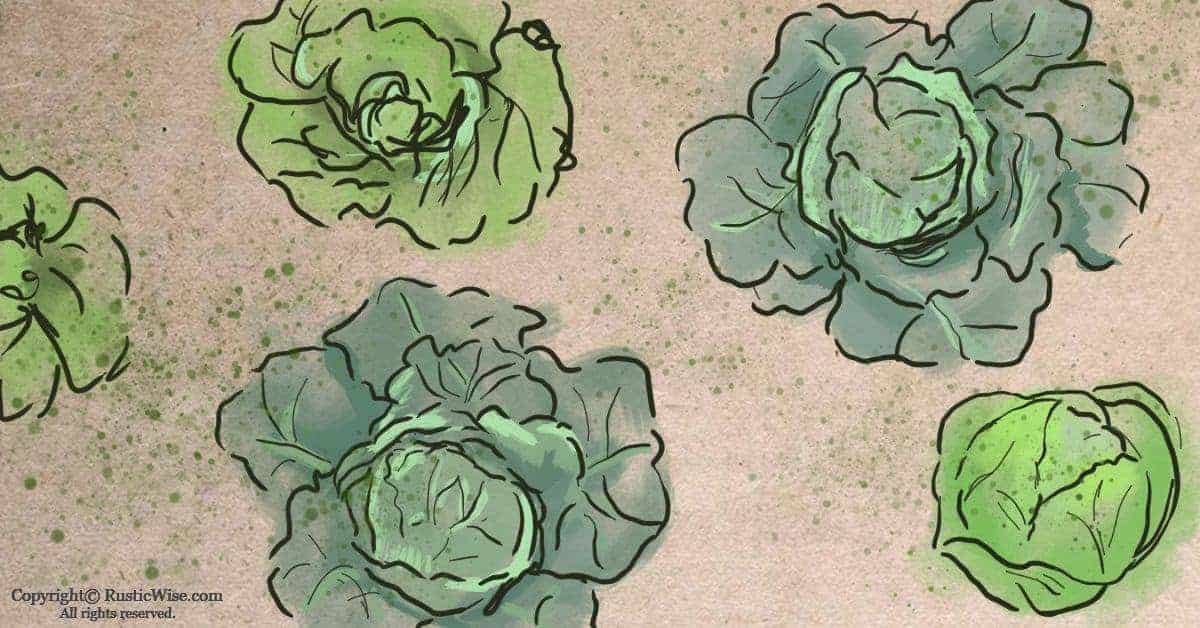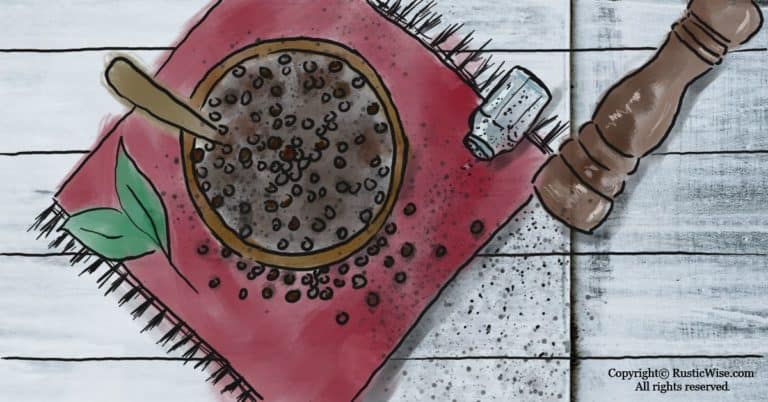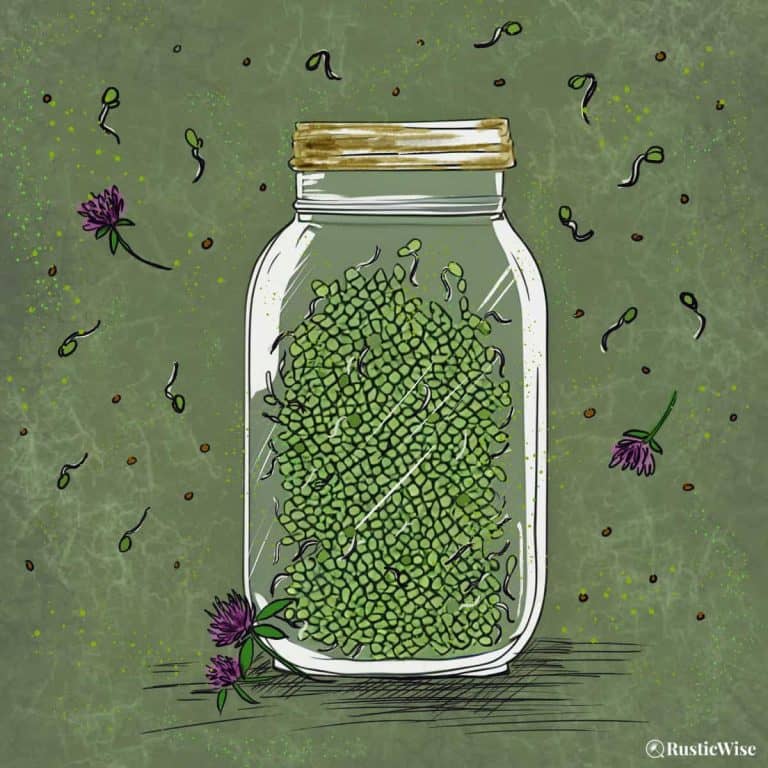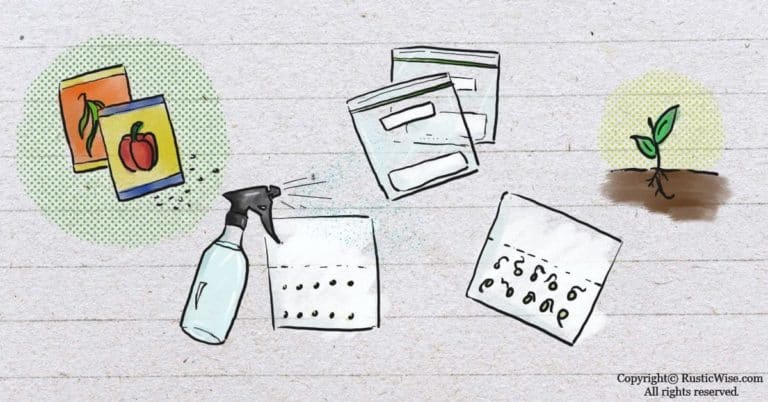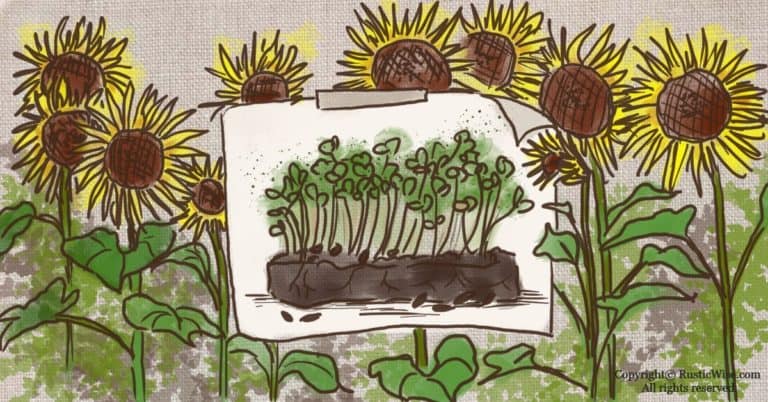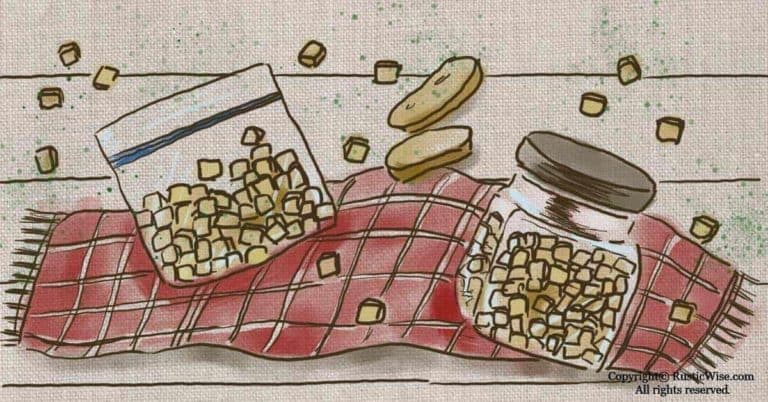Growing Cabbage in Winter + 5 Easy Cabbage Recipes
While there are many varieties of cabbage, winter cabbage is a group of late-maturing cabbages that are the hardiest bunch—able to resist frost and cold, and in some cases, keep producing fresh food all winter. As a biennial, cabbage will grow back once harvested so long as you leave enough stem behind. Growing cabbage in winter keeps gardeners busy (and well-fed!) even in the chilly months.
While late-maturing cabbages take longer to grow, they’re easy to care for, and your patience and efforts will be rewarded with winter harvests. Cabbages are one of the best winter crops to grow. They come in a variety of colors from creamy-green to dark green, from purple to pink.
Cabbages belong to the cole crops group of the Brassica oleracea family, which also includes broccoli, Brussels sprouts, and cauliflower.
Cabbage also does well in large pots, so consider growing cabbage indoors as well.
The best varieties of cabbage for winter harvests
These late-maturing cabbages are a tough bunch and are cultivated to withstand wintry conditions. Often these varieties are slightly smaller and harder than other cabbages.
- Savoy: A looseleafed variety with an agreeable taste and tough enough for a winter garden.
- Huron: This hybrid variety is designed for long term storage and is more disease resistant.
- Tundra: A cabbage able to withstand temperatures of 10 degrees Fahrenheit (-12 degrees Celsius) for short periods. It also provides a long winter harvest.
- Danish Ball Head: Keeps well, great for sauerkraut.
What temperature can cabbage plants tolerate?
According to the trusty book The Encyclopedia of Country Living by Carla Emery, cabbage can withstand frosts and overnights down to 20 degrees Fahrenheit (-6.7 degrees Celsius). Of course you might be able to push your luck with some particularly hardy varieties such as Tundra.
Keep in mind that cabbages that undergo a hard freeze don’t store as nicely in a cellar or fridge so harvest them before temperatures drop too low.
Depending on your climate, your cabbages might need to be covered with a plastic tunnel or fabric covering.
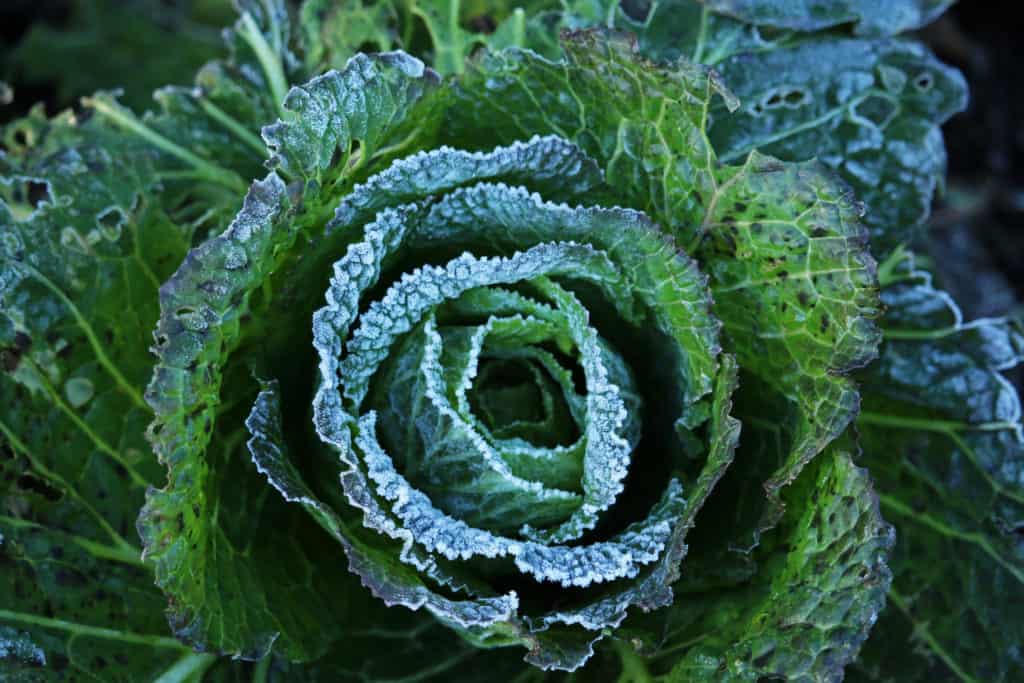
Credit: Local Food Initiative / Flickr, Frosty Cabbage
When to plant cabbage for winter
For cabbage ready to harvest in fall and winter, start planting late-maturing cabbage seeds sometime between late May to late June. Your cabbage will avoid the hottest temperatures during this time. With any luck, you’ll be harvesting from August, straight through the winter to April.
In the fall, most of your cabbage plants should be developing their main heads.
For a steady harvest throughout the cold months, stagger your planting times and try a few different cabbage varieties.
Growing cabbage in winter
Cabbage needs plenty of sunshine, water, and nutrients to grow. So plant in an area with full sun (at least six hours a day). Ensure the soil is fertile with a pH between 6.5 and 6.8, and water well.
As cabbage is a heavy feeder, you’ll need soil that’s rich in organic matter and well-draining to avoid rotting.
You can grow from seed indoors if you like. Plant in small pots or grow trays. Or, you may prefer to sow seeds directly in the ground outdoors. Either way, the directions for sowing are the same:
- Sow seeds ¼ to ½ inch (0.6 to 1.3 centimeters) deep and 3 inches apart (7.6 centimeters).
Once seedlings form three or four true leaves, you can transplant them to their final positions. Keep in mind that the more spaced out cabbage plants are, the larger they’ll grow.
To transplant:
- Ensure the soil is well-watered prior to transplanting. Transplant the day after it has rained, or water the soil the night before to allow water to soak in.
- Use a small trowel to carefully dig up as much of the roots as you can for each cabbage plant.
- Space each cabbage 18-24 inches (45.8-61 centimeters) apart. Transplant cabbage seedlings into rows spaced 3 feet (0.9 meters) apart. Firm the soil around each plant.
- Water well.
Transplanting tip: Wait until after a rain to transplant your cabbages. Or, you can soak the area where you’re planting with plenty of water overnight before transplanting the next day. Water well.
If you experience extreme heat or wind, you might need to provide cover for your cabbage seedlings for the first few weeks.
While cabbages take up plenty of room, they also produce a lot of food.
How to care for winter cabbage
Keep your cabbage plants well-watered with 1-1.5 inches (2.5-3.8 centimeters) of water each week. This is about every two to three days. To keep moisture in and provide some protection, apply a mulch of leaves, compost or ground up bark to the soil.
To keep your cabbage patch healthy, apply a bit of organic fertilizer such as liquid seaweed every few weeks.
How to harvest winter cabbage
You can choose to harvest cabbage heads small, large, or anywhere in between. You’ll know the cabbage head is ready for harvesting if it feels firm—give it a quick squeeze.
‘Baby’ cabbage heads have a nice, delicate flavor. While you may be tempted to let the cabbage heads grow as large as possible (more food, right?), make sure you harvest before the cabbage splits.
To harvest, use a sharp knife to cut the cabbage head off at the stem. To ensure your cabbage plant continues to grow and provide for more winter harvests, try to cut as close to the head as possible, leaving the bulk of the stem in the ground.
Cabbage pests to beware of
A few bugs that like to feast on cabbage include:
- Aphids
- Slugs
- Cabbageworms and cabbage loopers
- Root maggots
- Flea beetles
A few natural solutions to keep pests away include placing dill and/or thyme nearby which seems to discourage bugs. To keep root maggots away, apply some ashes from your fire pit around each cabbage. Or, you can cover your cabbages with a lightweight cloth.
Storing cabbage for the winter
To prepare your cabbage for storage, all you need to do is remove any wilted or rotting outer leaves. Avoid washing before storing as any trapped moisture will cause your cabbage to deteriorate.
You have options when storing cabbage. The easiest is to wrap an entire head of cabbage in plastic and place on a shelf in your fridge. This should last for several weeks.
If you have a root cellar, or a cold, dark basement, arrange rows of cabbage on a shelf making sure they stay a few inches apart. Alternatively, if you don’t have enough shelving, you can lay the cabbage on the floor onto a layer of hay, or several layers of newspapers.
Cabbage recipes
Chop, dice and add fresh cabbage to a variety of tasty recipes.
A simple and straightforward recipe that enhances the natural flavor of cabbage (via Well Plated by Erin).
Fight the winter sniffles with a bowl of comforting cabbage and tomato soup (via All Recipes).
One-Skillet Hot Sausage and Cabbage Stir-Fry with Chives
Because sausage and cabbage pair oh-so-well together (via Bon Appetit).
A whole roasted cabbage – where cabbage is the star of the meal (via Delish).
A family-friendly, tasty dinner without the fuss of wrapping cabbage rolls (via All Recipes).

Author: Josh Tesolin
Josh is co-founder of RusticWise. When he’s not tinkering in the garden, or fixing something around the house, you can find him working on a vast array of random side projects.

